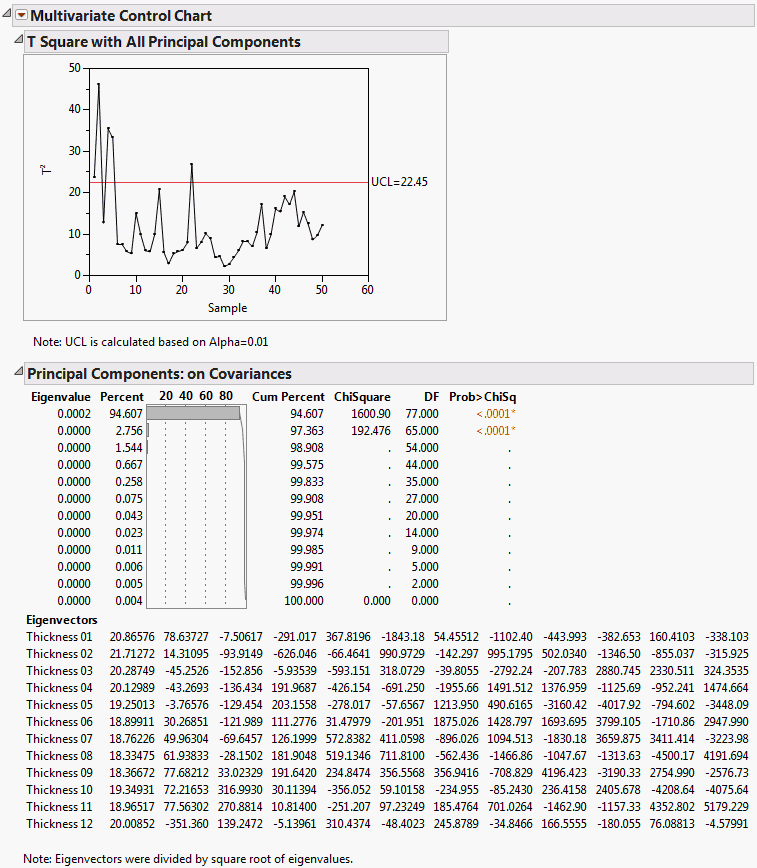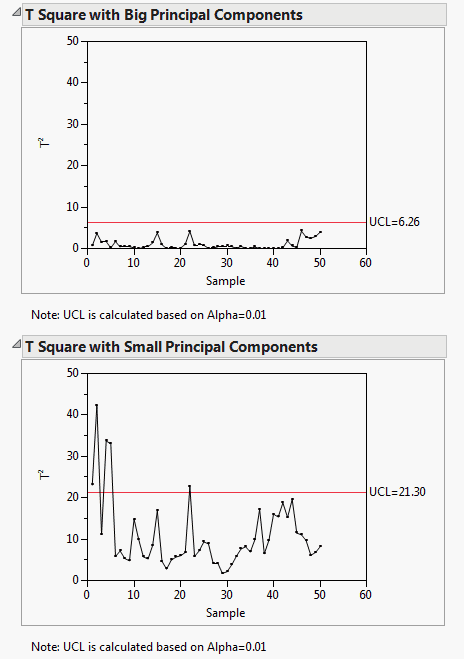Example of T Square Partitioned
Use T Square Partitioned to separate out the more important components from the less important components when studying process behavior. In this example, the coating on each of 50 bars was measured at 12 uniformly spaced locations across the bar. You want to examine the variation in the measurements and determine whether the causes of variation need to be investigated further.
1. Select Help > Sample Data Library and open Quality Control/Thickness.jmp.
2. Select Analyze > Quality and Process > Control Chart > Multivariate Control Chart.
3. Select all of the Thickness columns and click Y, Columns.
4. Click OK.
The current alpha level is set to 0.05, which corresponds to a 5% false alarm rate. You want to set the false alarm rate to 1%.
5. To change the alpha level, click the red triangle next to Multivariate Control Chart, select Set Alpha Level, and choose 0.01.
Figure 10.9 Initial Multivariate Control Chart for Thickness.jmp
The overall control chart in Figure 10.9 suggests that special causes affected bars 1, 2, 4, 5, and 22. Looking at the Principal Components report, you can see that almost 95% of the variation in the 12 thickness measurements is explained by the first principal component. You want to study the variation associated with this principal component further.
6. Click the red triangle Multivariate Control Chart and select T Square Partitioned.
7. Accept the default value of 1 principal component by clicking OK.
Figure 10.10 T Square Partitioned Control Charts
In contrast to the Principal Components report, the T Square with Big Principal Components chart, which reflects variation for only the first component, shows no evidence of special causes. The T Square with Small Principal Components chart shows that the special cause indications reside in the remaining smaller components. These smaller components do not explain much variation, and likely represent random noise. Therefore, you might conclude that the variation in the thickness measurements is not a major cause for concern.

